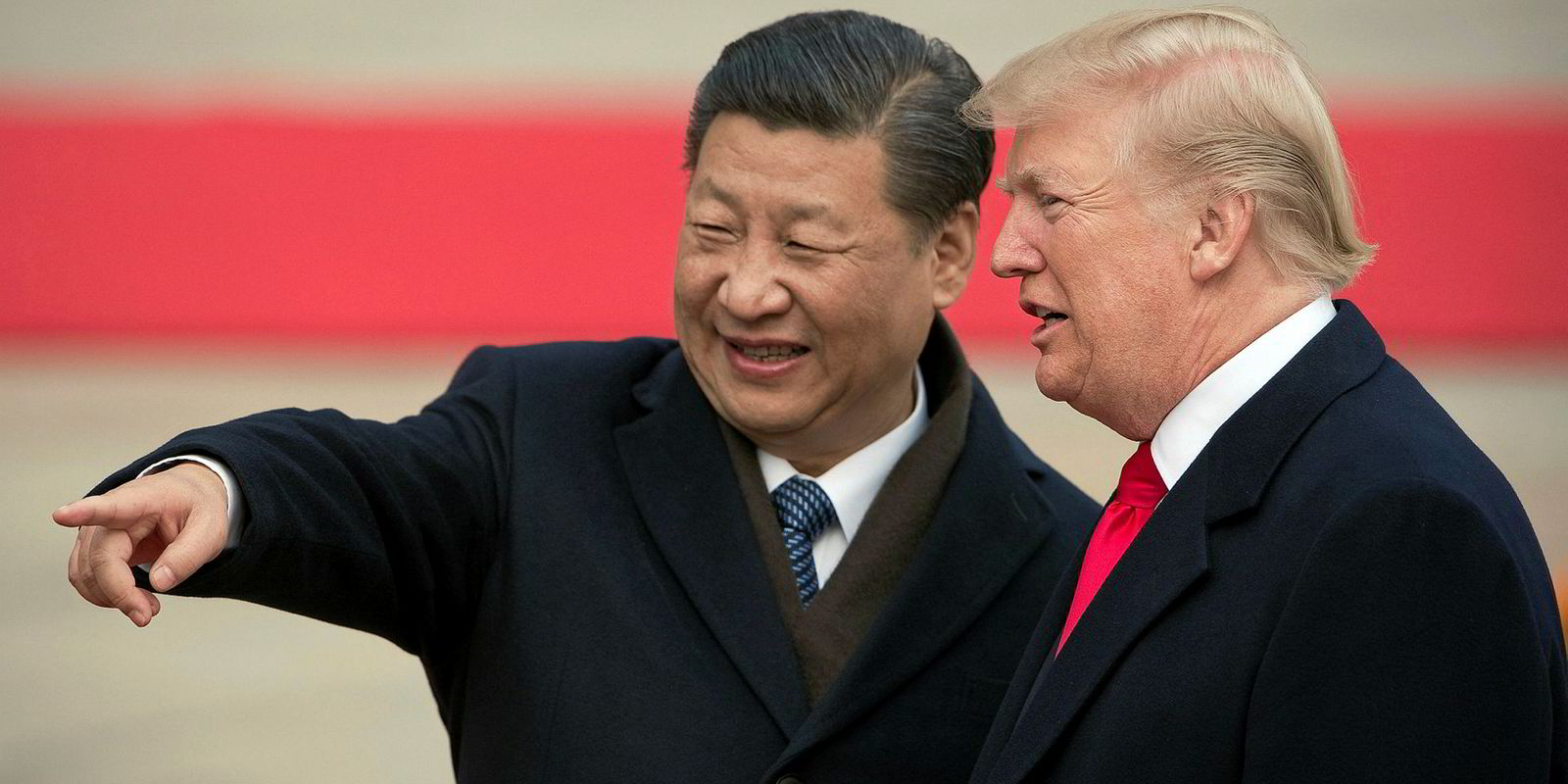Containership owners would take a direct hit if the US expanded tariffs to all Chinese imports, prominent shipping experts have warned.
US President Donald Trump has already imposed a 25% levy on $250bn of Chinese-made imports. Speaking in Ireland this week, he said he was considering slapping tariffs on a further $300bn-worth of Chinese goods coming into the US.
That could put a serious damper on boxship demand, causing a drop of up to 6% in US-bound goods — but it is almost impossible to know for sure what would happen, Simon Heaney, senior manager of container research at Drewry Shipping Consultants, said.
“It’s like a grenade has been chucked into the market,” he told TradeWinds.
Last year, China exported $540bn of goods to the US — more than one-third of which consisted of computers and electronics packed into containers, according to the US Census Bureau.
The rest comprised electrical equipment, machinery, clothing, furniture, edible goods, transport equipment, plastic and rubber products and leather items.
In return, the US exported $120bn of goods to the world’s second-largest economy — more than half of it transport equipment, computers, other electronics and chemicals, plus $13bn-worth of oil, gas and farm commodities.
If more tariffs are applied and there is a subsequent demand lull on the transpacific, carriers will at some point react by removing tonnage from the trade so that it's more closely attuned to demand
Simon Heaney, Drewry's senior manager of container research
Heaney said liner operators on the transpacific trades have been beneficiaries of higher freight revenue as capacity was squeezed amid a rush to front-load cargo to beat the tariffs.
“If more tariffs are applied and there is a subsequent demand lull on the transpacific [trades], carriers will at some point react by removing tonnage from the trade so that it’s more closely attuned to demand,” he said. In turn, that will hit demand for vessels. In turn, that will hit demand for vessels.
Transatlantic trade might pick up
The lead time for new tariffs to take effect has shortened since last year, which Heaney noted gives everyone involved less time to avoid any new levies before they take hold.
“It’s creating massive uncertainty in the market, which is making it difficult for both parties to plan ahead,” he said.
Amid this uncertainty, Heaney said China might export more goods to other countries, while the US could import more from Europe. “Transatlantic trade may pick up,” he said. “There’s a lot of variables.”
Seaborne transport of Chinese imports would certainly slow down if a further $300bn in goods were to be affected by tariffs, causing losses for the boxship sector, Jefferies analyst Randy Giveans said.
“The biggest direct loser would be containerships for sure,” he added.
He said transpacific trades account for 12% of global container volume, most of which is on the largest boxships sailing from China to the US West Coast.
Transpacific container trade volume jumped 59% to 7.19 million teu in 2018 but is on pace to fall by 71% this year to 2.09 million teu because of the trade war, according to Clarksons.
Giveans warned that containership owners’ stocks would also take a hit from across-the-board tariffs as a result of negative market sentiment: “There isn’t much strength in equities when you have this kind of overhang from tariffs.”
The dry bulk and tanker sectors would be “indirect losers” because the move would hurt China’s economy, thus lessening demand for US commodities such as soybeans and crude oil.
“China would also likely retaliate, putting tariffs on imports from the US,” he said.
The trade spat began last July when the Trump administration placed a 25% tariff on $50bn-worth of Chinese goods, prompting Beijing to put tariffs on $34bn in US imports.
Last month, Trump said he was raising tariffs on $200bn of Chinese imports from 10% to 25%. China retaliated with tariffs of up to 25% on $60bn of US goods.
Trump has announced tariffs on imports from several other countries as part of his “America First” policy to lower the country’s trade deficits.






